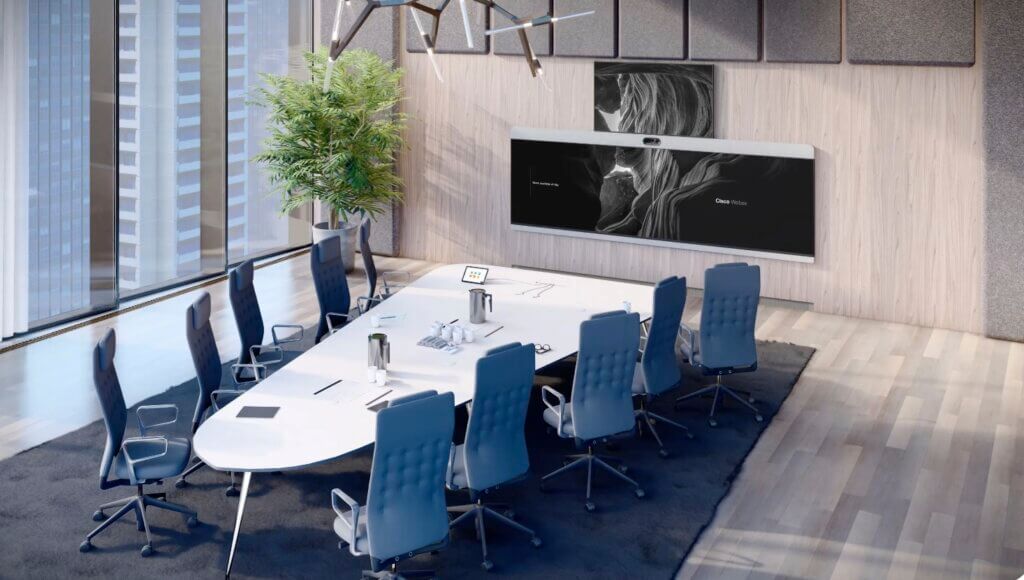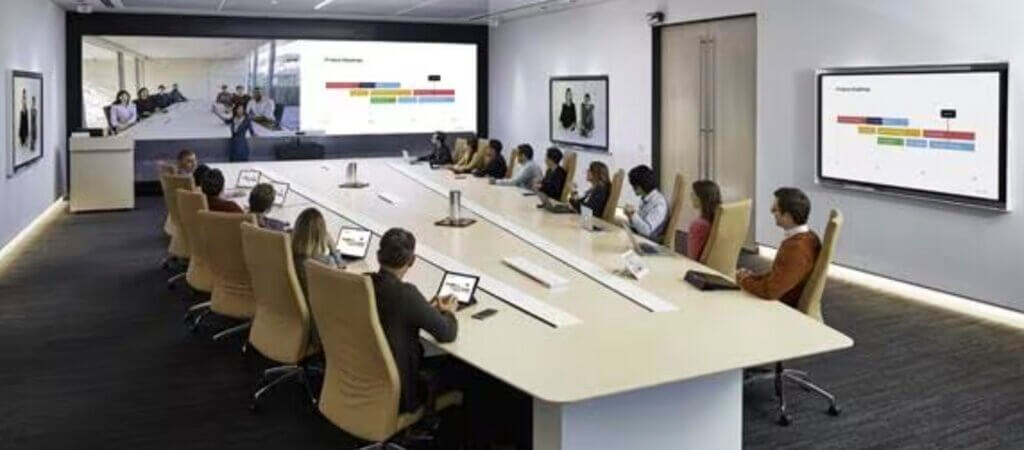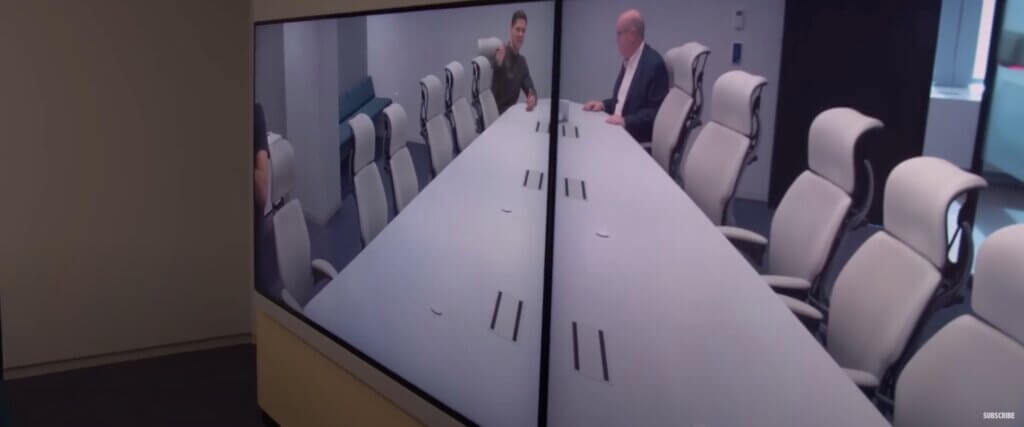Now that small hybrid meetings are commonplace, what meeting room designs work for a mixture of in-person and remote participants?
Phil Simon‘s article What oddly shaped conference room tables tell us about the future of work in Fast Company makes some suggestions based on Cisco’s hybrid meeting room design in its upgraded Manhattan, New York, location.
Here’s the relevant extract from Simon’s article:
“Rectangular tables often make it difficult for virtual meeting participants to see others, and vice versa.
Here is a schematic of Cisco’s conference table solution…
Employees who dial in to remote meetings can easily see in-person attendees—and vice versa. The angle of the table is designed to be captured by cameras in the front of the room—and to make sure all members have a clear view of the front screen.”
And here are computer renderings by Cisco with this design that use a couple of different table shapes.


A critique of the Cisco meeting room design
I learned about Cisco’s meeting room design in a July 21, 2023, Facebook post by hospitality & meetings industry consultant & trainer Joan Eisenstodt in the Event Integrity group [membership required]. Joan asked Paul Radde and me what we thought about the design.
Both of us immediately zeroed in on the poor sightlines for the in-person participants.
Paul responded:
“A cursory view of the V-shaped table, designed for the hybrid audience to see all does not allow those in-vivo attendees to see 4-5 of the other attendees/each. Straight rows block the end person from seeing 5 on his/her side, while those in the middle of the side, cannot see 4 without leaning forward. Think curved rows so people can see each other. Do not let the camera and hybrid attendees dictate. Consider everyone.”
And I added:
“I agree with Paul. I’ve attached the V-shaped table image. This set privileges the remote attendee(s), who can see everyone, over the in-person participants who can only see 50% of the in-person participants.
Instead, use an oval table with the remote camera and screen replacing an in-person seat at the tip of the wide axis. Or use a round table and make the remote camera a Meeting Owl that will swivel to focus on whoever is speaking.”
This screenshot, taken from Cisco’s video, shows that remote participants can see everyone (good) at the expense of the in-person participants’ ability to see the people who they’re sitting next to (bad).

We also discussed this design on Event Tech Chat. Becca Mazur pointed out that large oval or round conference tables are standard items at office furniture suppliers. Triangular or trapezoidal-shaped tables aren’t!
By the way, if you aren’t familiar with the Meeting Owl, check it out! It has a 360-degree camera, mic, and speaker, and the camera zooms in on whoever is speaking. I live in Marlboro, Vermont, and our town uses one for Select Board and School Board hybrid meetings. Because meetings are held in old buildings, the sound and video quality are occasionally subpar. But I believe that when carefully installed in a well-designed meeting room, this and similar devices provide a great way for remote attendees to participate equally in a hybrid meeting.
Conclusion
Meeting room designs need to work for both in-person and remote participants. For a dedicated hybrid meeting room, Cisco’s design can be improved by seating in-person participants along a curve rather than in straight lines.

 Employees who dial in to remote meetings can easily see in-person attendees—and vice versa. The angle of the table is designed to be captured by cameras in the front of the room—and to make sure all members have a clear view of the front screen.”
Employees who dial in to remote meetings can easily see in-person attendees—and vice versa. The angle of the table is designed to be captured by cameras in the front of the room—and to make sure all members have a clear view of the front screen.”